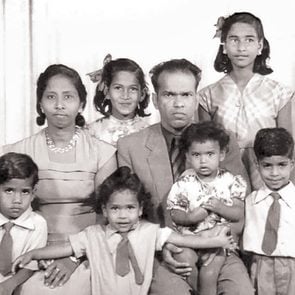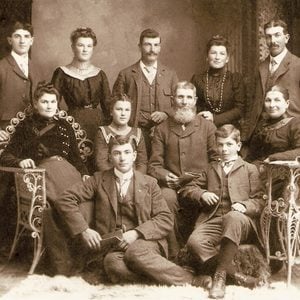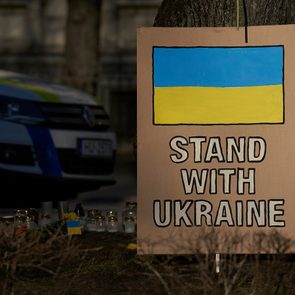This Heirloom Quilt Tells the Story of My Ukrainian Canadian Heritage
Delving into my genealogy, I have been able to identify each of the women who contributed to my family quilt. Most of them are my relatives, and I have been in contact with several of their descendants.
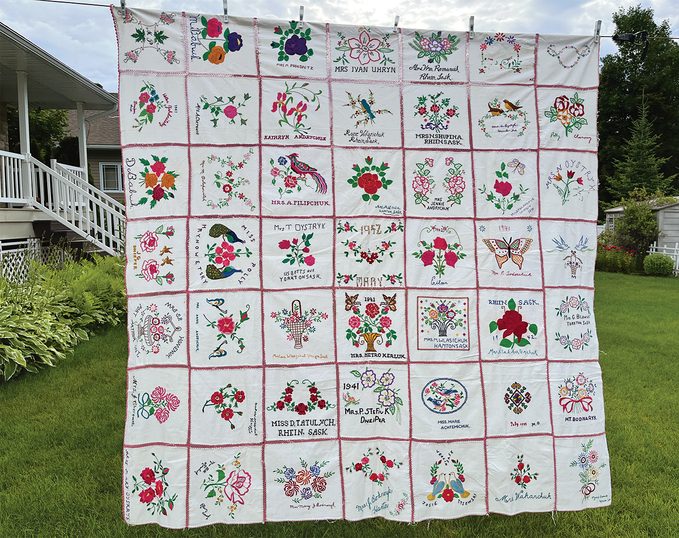
Discovering My Baba’s Quilt
My mother, Eileen Perreault, was Ukrainian Canadian. Shortly after her passing in 2010, I looked through her cedar chest and came across a quilt that belonged to her parents. “Baba”—my maternal grandmother, Anne Andrychuk —and “Gidi”—my maternal grandfather, William “Wasyl” Wlasichuk—were married for more than 60 years. They passed away in 1988 and 1987, respectively. They lived in Kamsack, Saskatchewan—the “Garden of Saskatchewan.” It’s on the Assiniboine River Valley, on Treaty 4 Territory.
My grandparents and great-grandparents emigrated from Kitsman, in the Chernivtsi region of Bukovyna, Ukraine. The Andrychuks came to Canada in 1899, while the Wlasichuks arrived in 1913. Other family members also immigrated here over time.
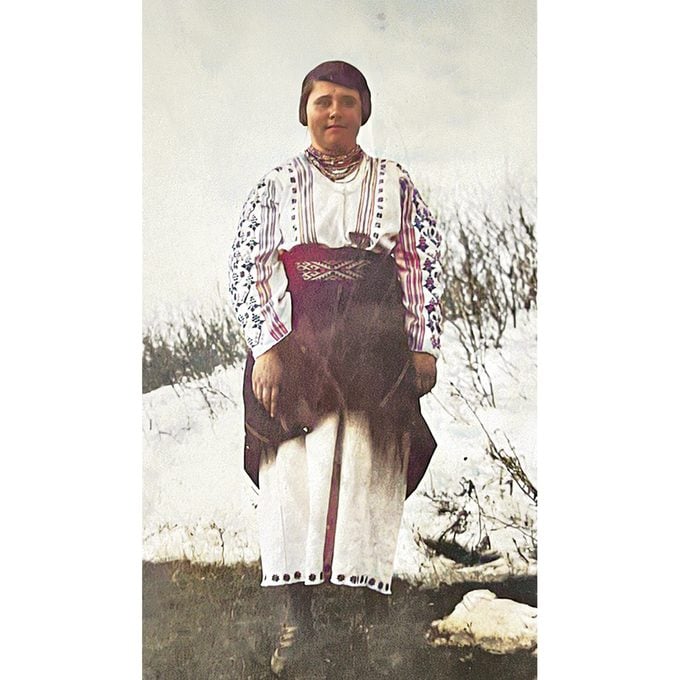
I was elated to discover this family quilt! Each square was hand-embroidered and showcased either the names or initials of the women who created them. Many women also added the names of their villages and towns. When the individual squares were completed, they were returned to my grandmother, who then crocheted all of them together. This unique quilt was created in 1941-42 and was still in impeccable condition when I found it.
Delving into My Genealogy
This discovery inspired me to go on a journey of exploration into my family. For the past two years, I have been piecing together the history of this quilt with my cousins Susan Bodnard (in Saskatchewan) and Cheryl Walker (in Alberta). We learned that the women in my grandmother’s circle enjoyed embroidering during those long, cold winters on the farm. They even did so by the light of a kerosene lamp in the evenings, as electricity was not yet available in rural Saskatchewan. They would mail squares to one another and the recipients would add their own unique embroidered patterns, then return the squares to the senders, who would form quilts by joining their squares together.
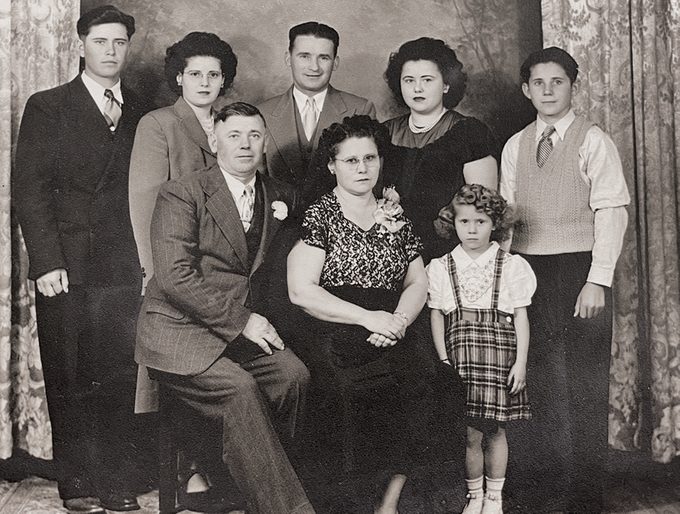
An Incredible Journey
Delving into my genealogy, I have been able to identify each of the women who contributed to my family quilt. Most of them are my relatives, and I have been in contact with several of their descendants.
What an incredible discovery and journey it has been to have this quilt as a piece of my cultural heritage! It is truly a family heirloom that represents the history and memory of my Ukrainian relatives!
Those who worked on the squares include my great-grandmother (Polly), my grandmother and mother, my aunt (Mary), great-aunts and cousins. All were from early pioneer families who lived in areas around Yorkton, Saskatchewan, such as Veregin, Dnieper and Rhein. From the late 1800s to the Second World War, they emigrated and settled in Manitoba, Saskatchewan and Alberta. They were, indeed, part of the first few waves of Ukrainians who came to Canada.
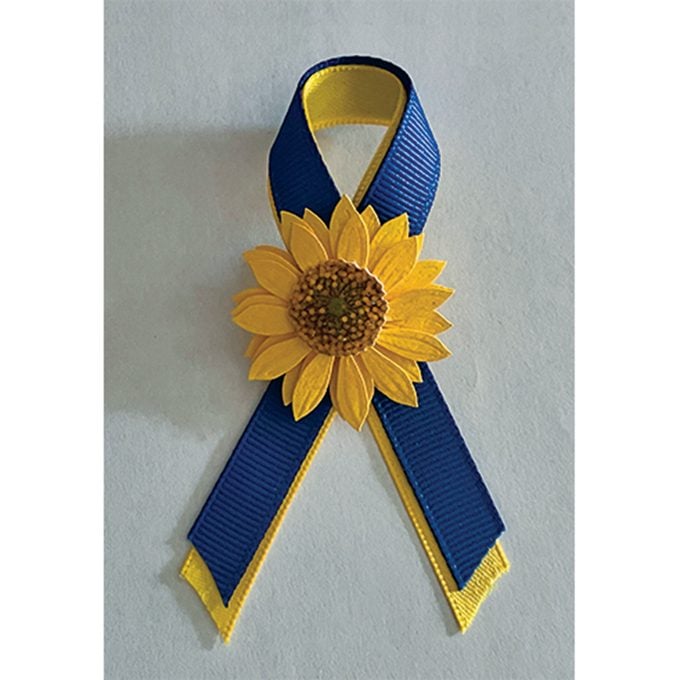
Supporting Ukraine
Although I’m very proud and appreciative of having inherited this quilt, my cousins and I feel it is equally important to share its history with others. Therefore, we have decided to donate the quilt to the Ukrainian Museum of Canada, in Saskatoon. In light of current events in Ukraine, I strongly believe in the importance of sharing our Ukrainian-Canadian history, our heritage and our cultural practices. In doing so, we are demonstrating our continued support and our connection to Ukraine.
To help in the fundraising for Ukrainian refugees, I donated 40 of my baba’s vintage pysanky—Ukrainian Easter egg—and some Ukrainian patterned ceramics. I also created “Tracy’s Sunflowers–Stand With Ukraine” ribbon-pins to help raise awareness and funds. The Assumption of the Blessed Virgin Ukrainian Orthodox Cathedral in Ottawa was very supportive in this effort. With the Department of Canadian Heritage, they also asked me to make ribbons for then-Prince Charles and then-Duchess of Cornwall Camilla and their entourage for their May 2022 visit with Ottawa’s Ukrainian community. What an honour that was! My greatest sense of accomplishment is in knowing I am helping raise awareness for Ukrainian refugees.
I am proud to be Ukrainian Canadian and, of course, also French Canadian. I believe my mother, Eileen, my grandparents Anne and Wasyl, my aunts Mary, Sylvia and Jenny, my uncles Mike and Nick, and other Ukrainian relatives would be happy to know that we, the next generations, continue to be proud of our Ukrainian heritage.
Next, find out how this Canadian charity is getting aid to Ukraine.
